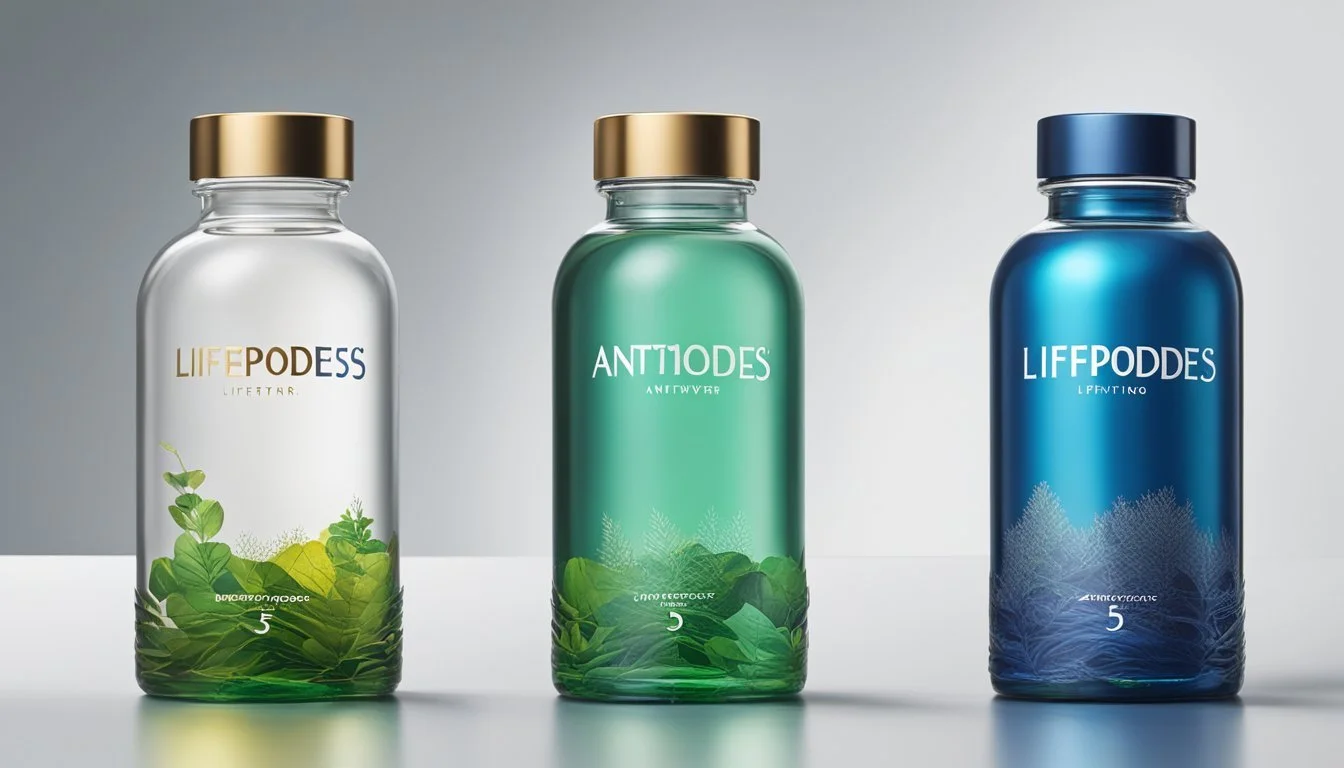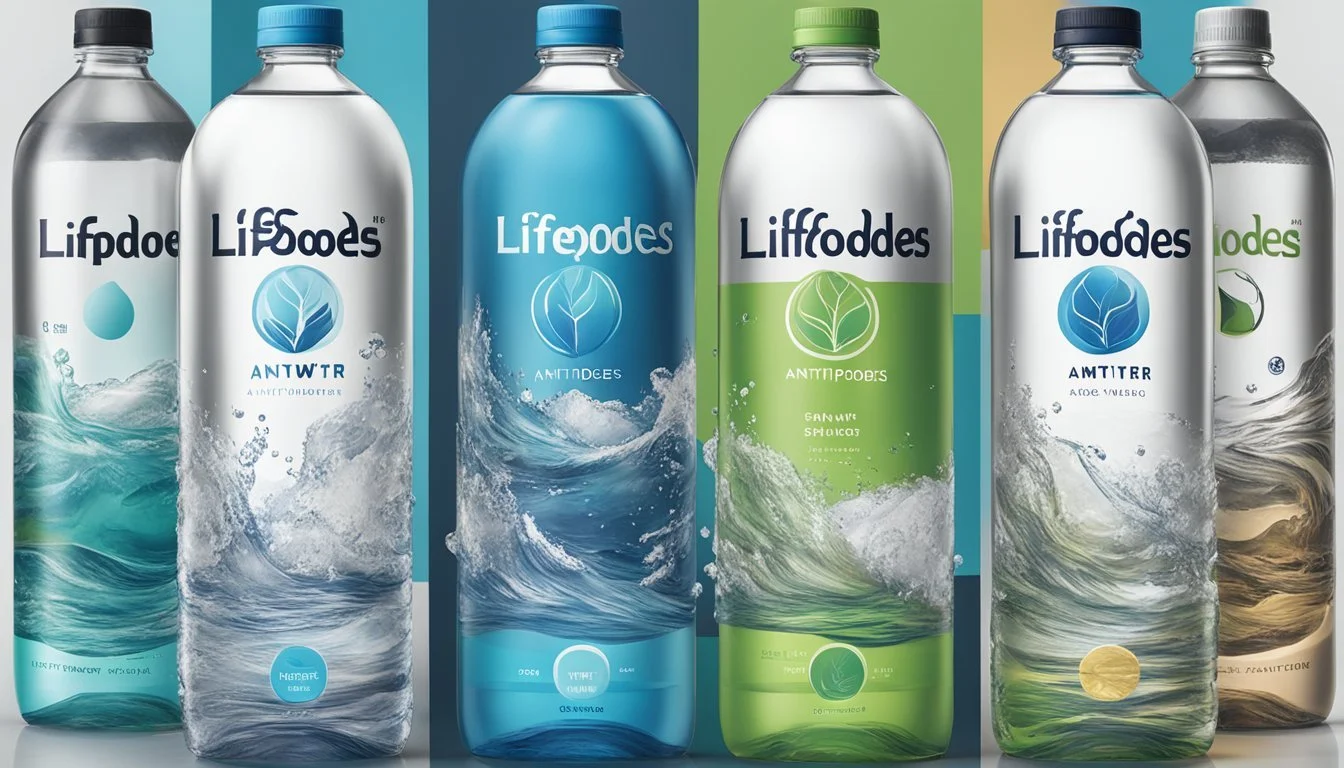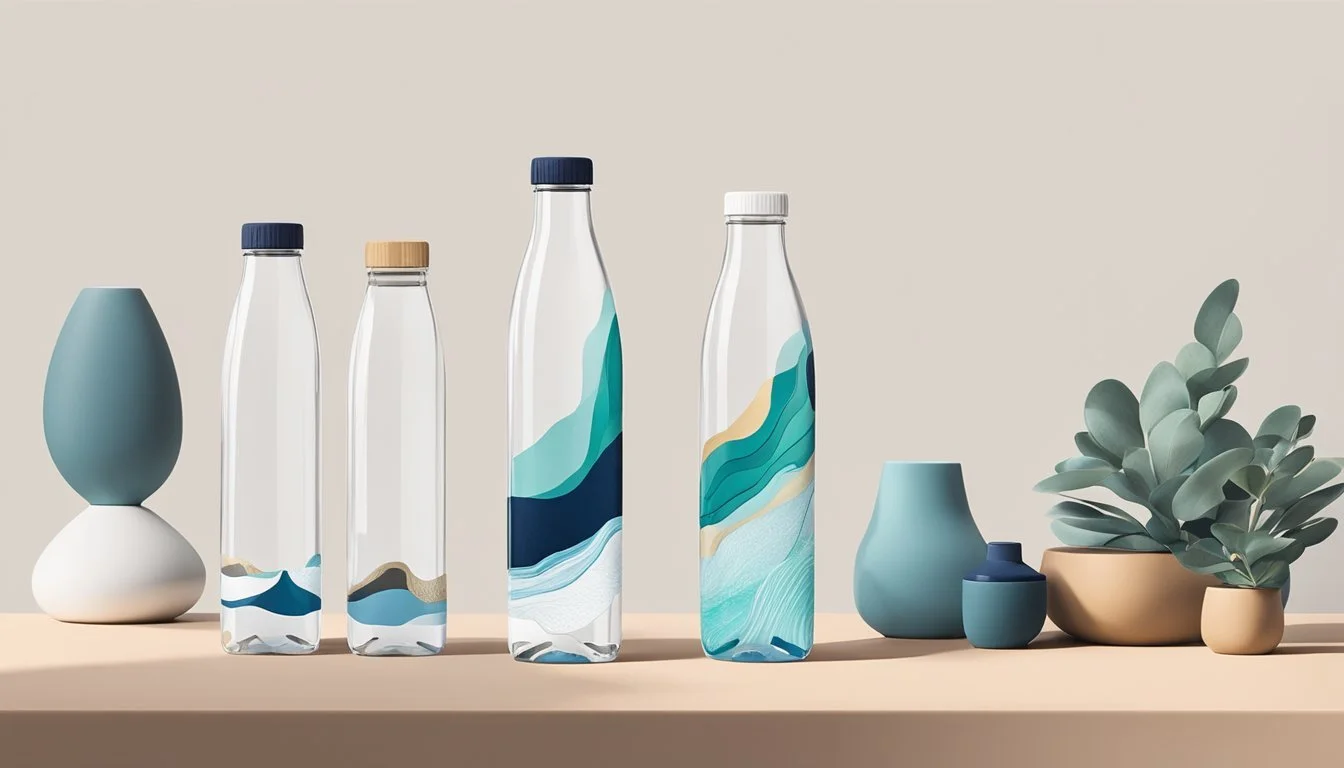LIFEWTR vs. Antipodes
Which Bottled Water is Better for Quality and Taste?
Choosing the right bottled water can significantly impact your hydration experience. LIFEWTR and Antipodes are two premium brands competing for your attention with unique features. LIFEWTR is known for its balanced pH, around 6.4 to 7.4, and modern packaging, making it a popular choice for those seeking a blend of purity and style.
Antipodes, on the other hand, prides itself on its naturally alkaline water sourced from New Zealand, ensuring a crisp and clean taste. When comparing both brands, Antipodes often stands out for its superior purity and natural origin. This makes it an attractive option for individuals prioritizing the quality and source of their bottled water.
The choice between LIFEWTR and Antipodes ultimately depends on personal preference in taste and brand values. Whether you lean towards LIFEWTR for its sleek design and accessibility or Antipodes for its natural purity, both options offer excellent hydration.
Overview of Bottled Water Industry
The bottled water industry has experienced significant growth globally, marked by varying consumer preferences and a competitive market landscape. Among the leading brands, specific consumer trends and regulatory frameworks shape the industry's dynamics.
Market Analysis
Bottled water has become a major player in the beverage market. Global sales surged, driven by demand for healthier alternatives to sugary drinks. The market expanded by 73% between 2010 and 2020, reflecting consumer shifts toward healthier lifestyles.
The industry includes multiple segments like spring water, mineral water, purified water, and sparkling water. Major companies such as Coca-Cola, PepsiCo, and Nestlé dominate, offering products like Dasani, Aquafina, and SmartWater.
Leading Bottled Water Brands
Several brands have established themselves as leaders. Evian and Fiji Water are known for their high-quality mineral content, sourced respectively from the French Alps and natural springs in Fiji.
Voss emphasizes its premium glass packaging and artesian water source. SmartWater and LIFEWTR by PepsiCo focus on purified water with added electrolytes, appealing to health-conscious consumers.
Meanwhile, Aquafina and Dasani by Coca-Cola cater to a broader market with wide availability and competitive pricing.
Consumer Trends and Preferences
Consumers increasingly prefer bottled water for its perceived health benefits and convenience. There is a growing awareness of environmental impact, boosting demand for nonplastic packaging such as glass bottles and recyclable materials.
Many buyers prioritize taste and source; Fiji Water is favored for its unique mineral profile, while Evian is chosen for its natural purity. Price sensitives opt for Dasani and Aquafina, which are widely available and affordable.
Premium brands are thriving, with products like Voss and LIFEWTR appealing to those seeking luxury and added nutritional benefits.
Regulatory Environment
The bottling and sale of water are regulated to ensure safety and quality. In the United States, the FDA oversees bottled water standards, including labeling and contamination levels. Bottled water must meet the same stringent standards as tap water.
Specific regulations cover various types, such as spring water and mineral water, which must be verified by the FDA. Packaging standards are also enforced to minimize environmental impact, promoting sustainability in the industry.
Regulatory compliance is critical for maintaining consumer trust and brand integrity.
Health and Hydration
Proper hydration is crucial for maintaining the body's functions, and the quality of water significantly impacts health. This section compares the hydration benefits and health impacts of LIFEWTR and Antipodes.
Importance of Hydration
Hydration plays a vital role in maintaining several bodily functions. Fluids are essential for regulating body temperature, maintaining fluid balance, and supporting muscle function. Whether it's LIFEWTR or Antipodes, both waters can contribute to keeping the body hydrated. However, water from different sources may contain varying levels of essential minerals.
For instance, electrolytes like magnesium, potassium, and calcium are important for muscle function and nerve signaling. Proper hydration with mineral-rich water can support these physiological processes effectively.
Water Quality and Health Benefits
Water quality impacts health significantly. LIFEWTR undergoes rigorous FDA monitoring, ensuring it is a safe and reliable option. It typically has a neutral pH, providing a clean hydration source without affecting the body’s pH balance.
Antipodes, on the other hand, is known for its high pH level, which can help neutralize acid in the body. High mineral content, including calcium and magnesium, adds health benefits by supporting bone health and metabolic functions.
In choosing between LIFEWTR and Antipodes, it’s important to consider the specific health benefits each offers, based on their mineral content and pH levels.
Comparative Analysis of LIFEWTR and Antipodes
LIFEWTR and Antipodes are both popular bottled water brands, known for their unique qualities and health benefits. This section will explore their differences in taste, nutritional content, purification and filtration processes, and eco-friendly practices.
Taste Profile
LIFEWTR is known for its clean and crisp taste, attributed to the balanced pH levels and electrolytes like magnesium sulfate and potassium bicarbonate. It is slightly more acidic or neutral with a pH level ranging from 6.4 to 7.4.
Antipodes, on the other hand, offers a smooth and refreshing taste, characterized by its naturally alkaline pH level of around 7.8 to 8.0. This brings a subtle, mineral-rich flavor, often preferred by those who enjoy a distinct, natural water taste.
Nutritional Content
LIFEWTR includes added electrolytes for taste, with noticeable amounts of magnesium sulfate and potassium bicarbonate. The added minerals aim to maintain hydration and support overall health.
Antipodes boasts a natural mineral content, as it is sourced from aquifers in New Zealand. It contains beneficial minerals like calcium, magnesium, and silica, providing a naturally balanced and nutritious profile without the need for added electrolytes.
Purification and Filtration
LIFEWTR undergoes a thorough purification process, including reverse osmosis and addition of electrolytes for taste. This multi-step filtration ensures that the water is free from impurities and provides consistent quality.
Antipodes prides itself on its artisanal approach. The water is sourced from deep aquifers, naturally filtered through layers of rock and sand. This natural filtration process maintains the water's purity and retains beneficial minerals, providing a high-quality drinking experience without extensive industrial treatment.
Eco-Friendly Practices and Sustainability
LIFEWTR uses BPA-free plastic bottles and promotes recycling by ensuring their packaging is 100% recyclable. The brand also engages in various sustainability initiatives to reduce its environmental footprint.
Antipodes takes a step further by using glass bottles, which are both recyclable and reusable. The brand is committed to environmentally friendly practices, including carbon-neutral shipping and sustainable sourcing, making it a preferred choice for eco-conscious consumers.
Product Design and Packaging
The design and packaging of bottled water can significantly influence consumer choices. Below, we dissect the aesthetics, materials, and branding impact of LIFEWTR and Antipodes.
Bottle Design and Artwork
LIFEWTR bottles are known for their vibrant and contemporary artwork. Each series features pieces from emerging artists, transforming functional bottles into mini art canvases. This emphasis on creativity and uniqueness sets LIFEWTR apart visually in the market.
In contrast, Antipodes opts for a minimalist design. The bottles have a clear, clean look, reflecting the purity of the artesian water they contain. The simplicity of their design exudes elegance, catering to a more sophisticated consumer base.
Materials and Environmental Considerations
LIFEWTR bottles are made from PET plastic, which is fully recyclable. The brand emphasizes its commitment to sustainability by encouraging recycling and using clear labeling to promote eco-friendly practices. The lightweight design also minimizes transportation emissions.
Antipodes boasts glass bottles, which are not only 100% recyclable but also reusable. Glass is often perceived as more environmentally friendly due to its longer lifespan and lower impact on landfills. This choice aligns with Antipodes’s premium positioning and commitment to sustainability.
Brand Identity and Consumer Perception
LIFEWTR has carved out a distinct identity by blending hydration with art. The collaboration with emerging artists not only enhances visual appeal but also fosters a connection with a diverse consumer base who value creativity. This strategy has made LIFEWTR a favorite among younger, trend-focused audiences.
Antipodes positions itself as a luxury brand. The combination of its minimalist bottle design and the use of glass packaging underscores an image of purity and high quality. Consumers perceive Antipodes as a premium product, aligning with its marketing of artesian water from pristine sources.
Both brands use distinct strategies to convey their values and appeal to their target audiences, highlighting the role of design and packaging in shaping consumer perception.
Sources and Production
LIFEWTR and Antipodes differ in origin, production processes, and quality control measures which impact their purity and taste. Understanding these factors helps consumers make informed choices regarding their preferred bottled water.
Origin and Water Source
LIFEWTR sources its water from various municipal water supplies in the United States. These sources undergo stringent purification processes to ensure premium taste and quality.
Antipodes on the other hand, is sourced from a natural aquifer in the Bay of Plenty region of New Zealand. The water is collected from depths where it has been naturally filtered by layers of volcanic rock, providing a distinct, clean taste.
Production Process Description
The production process for LIFEWTR begins with municipal water, which then undergoes reverse osmosis filtration. This process removes impurities and ensures the water is of the highest possible purity.
Antipodes use a minimal processing approach. The water is collected directly from the aquifer, and only basic filtration is applied to retain its natural minerals. This gentle treatment ensures the water's natural characteristics remain intact, offering drinkers an authentic taste of New Zealand's pristine environment.
Quality Control Measures
LIFEWTR adopts rigorous quality control measures, including frequent testing for contaminants such as heavy metals, nitrates, and biological impurities. Regular assessments ensure the water meets stringent safety standards before it reaches consumers.
For Antipodes, quality control starts at the source. The aquifer’s water quality is tested regularly to confirm it remains free of contaminants. Additionally, the bottling process is closely monitored to maintain hygiene and safety standards, guaranteeing that each bottle offers a pure and uncontaminated drinking experience.
Both brands emphasize the importance of purity and safety in their production processes, though their methods and sources differ significantly.
Consumer Insights
LIFEWTR and Antipodes offer unique profiles in the bottled water market. These insights explore personal preferences, controversies, and health-conscious choices that consumers consider when selecting their go-to hydration option.
Personal Preferences
When it comes to taste, LIFEWTR offers a crisp, clean flavor that appeals to many. It often carries a slight tang due to its pH level, which some find refreshing. Antipodes, sourced from New Zealand, boasts a smooth, subtle taste, favored for its natural purity.
Consumer trends show that individuals often choose water based on packaging and brand perception. LIFEWTR's colorful, artistic bottles attract a younger, creative demographic, whereas Antipodes' minimalist, glass bottles cater to eco-conscious consumers.
In blind taste tests, LIFEWTR and Antipodes frequently rank differently based on individual palate preferences, with each brand holding distinct appeal.
Concerns and Controversies
Concerns and Controversies
Consumers often worry about contaminants in bottled water. LIFEWTR undergoes rigorous purification processes, and its plastic bottles are BPA-free, but plastic taste concerns linger for some. Antipodes touts its naturally sourced water, free from industrial pollutants, in recyclable glass bottles to minimize contamination risks.
Class-action lawsuits have targeted various bottled water brands over misleading claims about sourcing and purity. Currently, neither LIFEWTR nor Antipodes are significantly involved in such legal controversies.
There are concerns about the environmental impact of production and packaging, with plastic waste being a major issue for bottled water companies. Antipodes' glass bottles present a greener alternative, appealing to environmentally-conscious buyers.
Health Conscious Choices
Health-conscious consumers seek bottled water with added benefits like electrolytes and optimal pH levels. LIFEWTR positions itself as a functional water, with an alkaline pH, designed to help with hydration and balance electrolytes.
Antipodes is appreciated for its natural purity and low mineral content, offering clean, simple hydration without added sugars or calories. This makes it ideal for those seeking straightforward, calorie-free hydration.
For many, the health benefits of regular water intake, whether from LIFEWTR or Antipodes, are a significant factor in their choice. Both brands aim to align with consumer interest in wellness and hydration efficiency.
Choosing between LIFEWTR and Antipodes often depends on these varied health considerations, with each brand providing specific benefits unique to its product formulation and source.
More About LIFEWTR
Icelandic Glacial vs LIFEWTR: Which Bottled Water is Better?
LIFEWTR vs Kirkland Signature: Which Bottled Water is Better?
LIFEWTR vs Mountain Valley Spring Water: Which Bottled Water is Better?
LIFEWTR vs Richard's Rainwater: Which Bottled Water is Better?
LIFEWTR vs Whole Foods Italian Still Mineral water: Which Bottled Water is Better?
More About Antipodes
Antipodes vs Cascade Mountain: Which Bottled Water is Better?
Antipodes vs Hawaii Volcanic: Which Bottled Water is Better?
Antipodes vs Kirkland Signature: Which Bottled Water is Better?
Antipodes vs Richard's Rainwater: Which Bottled Water is Better?
Antipodes vs Solan de Cabras: Which Bottled Water is Better?
Antipodes vs Talking Rain AQA: Which Bottled Water is Better?
Antipodes vs Whole Foods 365: Which Bottled Water is Better?
Antipodes vs Whole Foods Italian Still Mineral water: Which Bottled Water is Better?
Hawaiian Springs vs Antipodes: Which Bottled Water is Better?
Icelandic Glacial vs Antipodes: Which Bottled Water is Better?
Mountain Valley Spring Water vs Antipodes: Which Bottled Water is Better?
Nestle Pure Life vs Antipodes: Which Bottled Water is Better?





